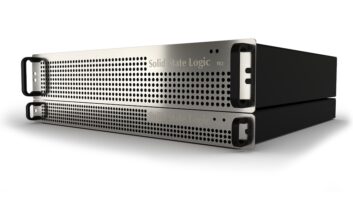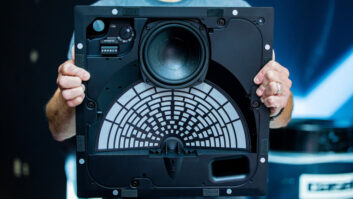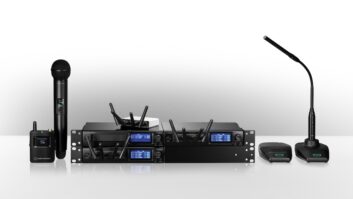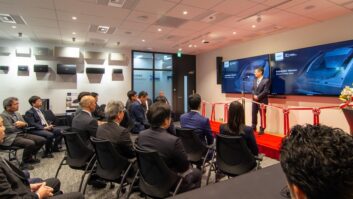Typical line arrays often don’t work in traditional church environments due to their lack of horizontal dispersion control and their need to be installed in pairs (creating sonic overlap), but the church’s new Bose® RoomMatch® sound system addresses both of those issues elegantly
Framingham, Massachusetts, August 5, 2013 – When Steven Brown, System Design & Sales Engineer at Progressive Electronics in suburban Kansas City, Missouri, saw the interior of St. Thomas More Parish Church, he knew right away that the issues that were prompting the church to search for a new sound system would not be resolved with one of the typical line array systems that have become ubiquitous in many contemporary houses of worship. St. Thomas More is a traditionally designed Catholic Church structure, with tall parallel walls and a high, pointed ceiling. “You need some very special characteristics in a sound system to correctly handle that,” says Brown. And he found them, with a system consisting of RoomMatch® loudspeakers and PowerMatch® amplifiers from Bose® Professional Systems Division.
Brown’s company assembled a single array, hung at the front of the sanctuary directly above the altar, consisting of Bose RM9010, RM9020, RM7005 and RM7010 array module loudspeakers, all powered by a pair of PM8500N PowerMatch amplifiers. Along with six Bose Panaray® MA12 modular line array loudspeakers used as fills around architectural details, the system gave St. Thomas More Parish its first satisfying sound system ever. “In fact,” Brown recalls, “One of the priests told me that this was the first time he’d ever been able to hear a reading clearly in the church.”
Brown says the Bose RoomMatch system fills a significant need in house-of-worship live sound. “Line arrays are fine when it comes to vertical dispersion coverage, which works very well in many contemporary-style churches,” he explains. “But with traditional churches like St. Thomas, what you’re looking for is predictable and definable horizontal sound control, and that’s something that the Bose RoomMatch array modules handle magnificently. A line array system typically needs to be installed in pairs in order to cover a wide space, since they’re designed for vertical dispersion, but that creates sonic overlap and resulting interference that impedes intelligibility. The Bose RoomMatch modules can be configured in a single progressive array, like we did at St. Thomas More, and the result is even coverage across the entire space with minimal excitement off the walls and ceiling.”
In addition, the single array of the Bose RoomMatch loudspeakers was also a much better aesthetic fit for St. Thomas’ traditional interior design. Custom-painted to match the Sanctuary walls and ceiling, it became the perfect sound system for this house of worship: heard extremely well and far more attractive than the original wood-grained loudspeaker boxes.
At the Rolling Hills Presbyterian Church in nearby Overland Park, Kansas, where Brown installed a RoomMatch system last year, the pastor there told him that the congregation’s members with hearing problems sent him letters praising the sound quality of the new system. “The same thing is happening at St. Thomas,” says Brown. “Those with hearing issues say that they now can hear the services like never before. The RoomMatch system gets the job done.”
About RoomMatch Array Module Loudspeakers
Introduced in 2011 and recently expanded with several new modules, the Bose RoomMatch series offers a new class of curvilinear array loudspeaker – the progressive directivity array – providing both concert-quality sound for live music and clear vocals for spoken word, with unmatched seat-to-seat tonal balance consistency for installed sound systems. The full-range modules are available in 20 different combinations: horizontal coverage patterns of 55, 70, 90 or 120 degrees, and vertical coverage patterns of 5, 10, 20, 40 or 60 degrees.
The progressive directivity array offers the ability to vary both the horizontal and vertical coverage patterns for each module in the array based on the room dimensions. More precise coverage control helps sound system designers ensure good intelligibility with spoken-word program material, especially in reverberant rooms, as well as the best possible tonal balance throughout the listening area.







